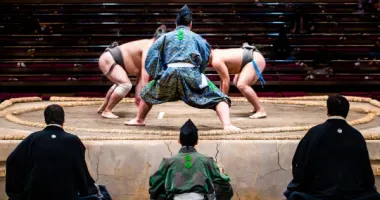The museums of the major Japanese companies in Tokyo
Japanese companies in the age of art
Tokyo has the particularity of hosting several museums in its city center which belong to some of the largest companies in the country. Western art, treasures from the Far East, historical relics from Japan, the collections displayed in their galleries have something for everyone!
The Idemitsu Art Museum, Oriental Art Gallery
Idemitsu is a large Japanese company specializing in mining and oil. The company operates across the country and was a pioneer in self-service gas pumps. It also has an art museum right in Marunouchi, Japan's financial district.
Located on the ninth floor of the Teigeki building, it deploys a large collection of Japanese paintings including various styles:
paintings of the yamato-e type, a "traditional" Japanese style that flourished from the Heian period to cross the whole
Japanese Middle Ages up to the Edo period (1603-1868). In particular, the museum has the famous emaki (work of art on a roll) Ban dainagon ekotoba, which is a national treasure of Japan.
works from the Rimpa school, including works by the great artist Tawaraya Sotatsu.
many yukio-e paintings, which are better known among us as prints and which were immortalized by geniuses such as Hiroshige or Hokusai.
The museum is also the setting for many ceramics originating from the countries of Asia Pacific (Korea, China) and large calligraphic documents.
Address: 3 Chome-1-1 Marunouchi, Chiyoda City, 100-0005 Tokyo
Western art at the Mitsubishi Museum
The Japanese conglomerate Mitsubishi also owns a museum in Marunouchi. Located in a building with a slightly retro look (a two-story building made of red bricks) that stands out at the foot of the immense skyscrapers of the district, the Mitsibushi Ichigokan museum is a real step back in time.
Firstly because it is a recent reconstruction (opened in 2010) of Marunouchi's very first Western-style building, completed in 1894 to house Mitsubishi's banking service.
But also because the 19th century is close at hand with its collection of Western works of art from the period, including a magnificent series of paintings by Toulouse-Lautrec (more than 200!).
Address: 2 Chome-6-2 Marunouchi, Chiyoda City, 100-0005 Tokyo
The Mitsui Museum Tea Ceremony
Among the major Japanese companies, we could not forget the Mitsui group. The venerable multi-centennial house, whose origins date back to merchants who settled in Edo (former name of the city of Tokyo) in the middle of the 17th century, built its museum in the main building of Mitsui. The latter is located in Nihonbashi, the family's historic settlement.
With its neo-classical style and its Corinthian columns, it recalls the time when Mitsui became a huge zaibatsu (the name for pre-war Japanese conglomerates).
The family history can also be read on the 7th floor of the building, dedicated to the Mitsui memorial museum where you can find many antiques from Asia-Pacific, but also from Japan (katana, Noh masks ), collected by the clan over the years.
The collection is especially marked by the countless objects related to the tea ceremony. In total, the museum includes 6 national treasures as well as 75 important cultural assets (including the building itself!).
Address: 2 Chome−1−1 Nihonbashimuromachi, Chuo City, 103-0022 Tokyo
The Impressionism Festival at the Bridgestone Museum
The big tire manufacturer Bridgestone is also the owner of the Art Museum of the same name. There are many impressionist and post-impressionist painters as well as works from the 20th century. Cézanne, Van Gogh, Monnet, Gaughin, Manet or Renoir... All the great Western names can be found in this museum, which also gives pride of place to Japanese artists from the same period.
You will also be able to admire works by Fujima Takeji, who introduced Impressionist elements into Japanese painting of the time, in particular one of his most famous productions: the black fan.
The museum is currently under reconstruction, and will reopen in January 2020 under the name "Artizon Museum". The new establishment will be twice as large, and will include in addition to the current collection of works of ancient art, modern Japanese art as well as contemporary art!











































